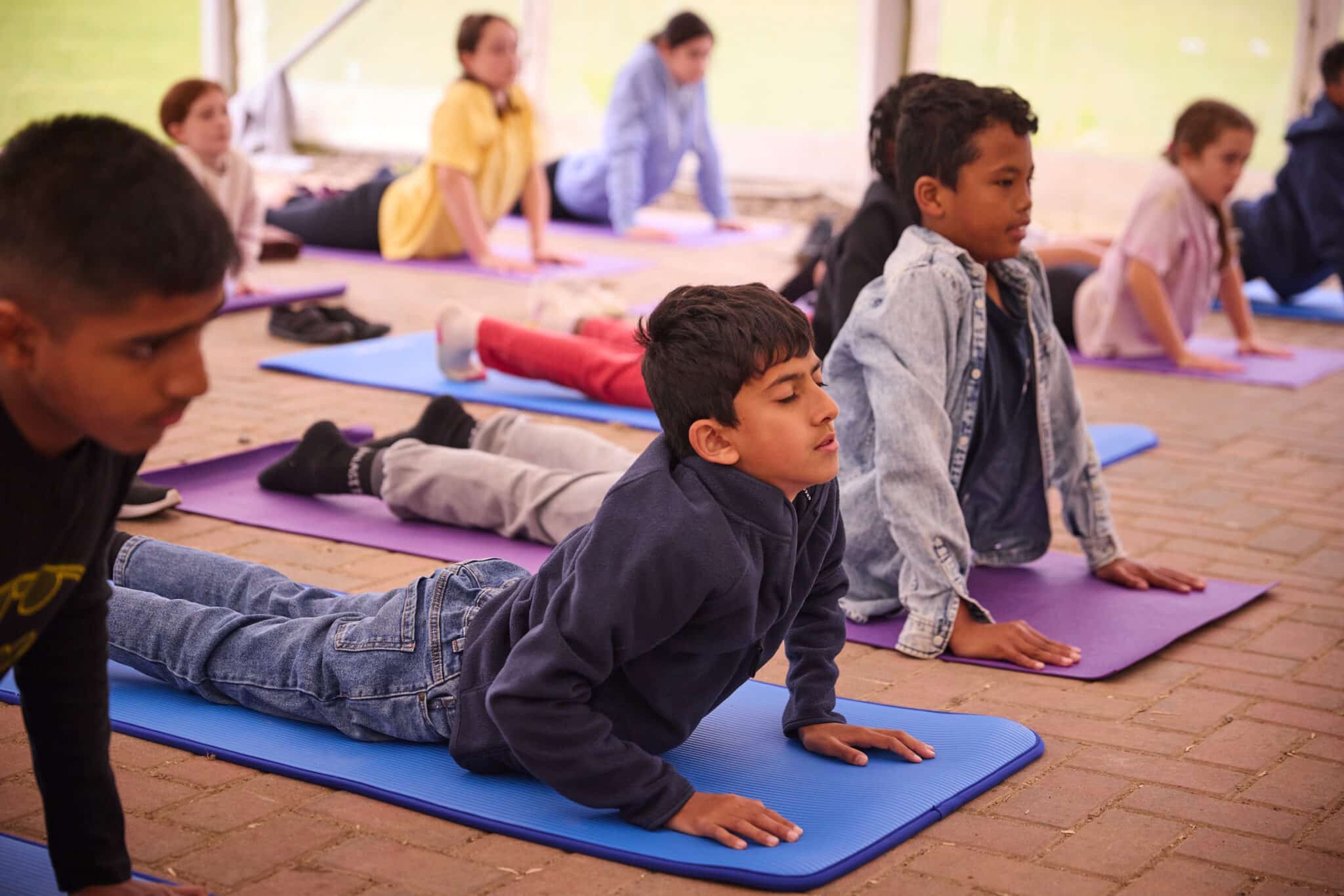Did you know that almost two-thirds of children between the ages of 5 and 16 felt stressed or anxious because of school?
In a world filled with high expectations, social media influences, and growing mental health concerns, prioritising the wellbeing of students has never been more critical. By creating environments where they can learn, grow, and thrive, teachers have the power to make a big, positive difference.
Introducing fun, engaging wellbeing ideas for schools can help students build resilience, reduce stress, and develop positive habits that last a lifetime. Here, we’ll share creative and effective ideas that you can easily incorporate into your school to help your students thrive.
The importance of wellbeing in schools
Student wellbeing plays a vital role in creating a positive, effective learning environment. Across the UK, there’s growing awareness that a child’s mental, emotional, and physical health can have a significant impact on their ability to learn, build relationships, and feel a sense of belonging at school.
In the UK, wellbeing in schools has become a top priority in recent years. Research shows that 60% of teachers agree that children’s wellbeing should be measured in school at least once a year. Looking at these statistics, it’s clear that schools must implement strategies that support mental, emotional, and physical health.
When wellbeing is actively supported, students are more likely to attend school regularly, engage in lessons, and show resilience when challenges arise. On a wider level, schools that prioritise wellbeing often see improved behaviour, stronger peer relationships, and a more inclusive culture.
Embedding wellbeing into school life starts with everyday actions, consistent support, and a shared commitment across the whole school community.
Measuring the impact of wellbeing activities
While introducing wellbeing initiatives is a great first step, it’s just as important to understand whether those activities are actually making a difference. Measuring the impact of wellbeing strategies can be as simple as keeping track of how students are feeling and responding over time.
Monitoring wellbeing in this way can help teachers and senior leaders make informed decisions, ensure support is reaching the right students, and demonstrate the value of wellbeing initiatives to stakeholders like governors and Ofsted.
Here are a few practical ways schools can measure the impact of their wellbeing activities:
1. Student surveys and check-ins
Short surveys are a simple, low-pressure way to give students a voice. You can ask questions about how they feel at school, which activities they enjoy, or what helps them manage stress. These can be anonymous to encourage honesty, and repeated throughout the term to identify trends or changes.
After launching a new weekly mindfulness session, for example, you might ask students how calm or focused they feel afterwards, what parts of the session they enjoy most, and whether they’d like more of the same. Over time, these insights can help shape your school’s wellbeing offer.
2. Mood trackers and wellbeing journals
Mood tracking is a great way to help students reflect on their own emotions, and it also provides useful insight for teachers. This could be as simple as a daily emoji chart, coloured cards for morning check-ins, or wellbeing journals where students jot down how they’re feeling each day.
In tutor groups, a traffic light system can work well, with red for stressed or anxious, amber for okay, and green for feeling good. This helps teachers quickly spot patterns or identify students who may need extra support, without putting pressure on them to speak up in front of others.
3. Attendance and behaviour data
While well-being can’t always be measured in numbers, tracking improvements in attendance, punctuality, or classroom behaviour can help show progress over time. A drop in detentions or fewer reports of low mood or disengagement may indicate that students are feeling more settled and supported.
If you’ve recently introduced something like regular outdoor activity or a gratitude wall, changes in behaviour, particularly around break times, for example, more students joining in group games or spending time chatting with peers rather than sitting alone, can be a subtle but meaningful sign that students are responding positively.
4. Workshop and activity feedback
Whenever you run a new wellbeing initiative, like a creative workshop or kindness challenge, it’s useful to gather quick feedback afterwards. This could be a simple one-question exit slip (“What did you enjoy most?”) or a short form asking students to rate their experience and how it made them feel.
You can also ask staff to share any changes they’ve noticed in student mood or engagement, especially if an activity took place across multiple year groups or involved quieter students who don’t usually speak up.
Measuring well-being is about keeping track of what works, being responsive, and making sure your school’s efforts are truly supporting those who need it most. The key is to make these tools part of everyday routines, rather than a formal assessment process.
Over time, this data, whether qualitative or quantitative, can help shape future wellbeing plans and provide powerful evidence to support your school’s pastoral strategy.
The benefits of student wellbeing activities
Student wellbeing activities can lead to numerous positive outcomes. Some of the key benefits include:
- Improved mental health: Wellbeing activities help students cope with stress, anxiety, and other mental health issues, reducing the risk of burnout and depression.
- Academic performance: When students are mentally and emotionally balanced, they are more likely to focus and perform better in school.
- Enhanced social skills: Many wellbeing activities foster collaboration and communication, helping students build stronger relationships and emotional intelligence.
- Physical health: Participating in physical activities such as team sports like football, individual exercises, or movement-based practices, helps students develop both a strong body and a balanced mind.
- Increased resilience: By practising self-care, students learn how to manage setbacks and challenges, helping them become more resilient individuals.
6 Fun wellbeing activities for school students
Wellbeing activities can be simple, enjoyable and easily woven into the school day. When students are given space to relax, connect with others and express themselves, they’re more likely to feel supported and ready to learn.
Here are six fun wellbeing activities for school students that can boost their mental health, enhance social connections, and much more:
1. Mindfulness sessions
Mindfulness is a powerful tool to help students manage stress and improve focus. Setting up regular mindfulness sessions, whether during class or as an extracurricular activity, can be a great way to teach students relaxation techniques. Start with simple breathing exercises, such as the 4-7-8 technique (inhale for 4 seconds, hold for 7 seconds, exhale for 8 seconds), to calm their minds. Meditation is also effective at enabling students to develop a deeper connection to their physical sensations and gain better control over their emotions.
2. Start a yoga club
Yoga is another excellent wellbeing activity. This ancient practice not only improves flexibility, strength, and posture but also helps students manage their bodies and emotions through movement and breathwork, effectively reducing stress and anxiety. Plus, classes can be tailored to different skill levels, making them accessible to all students.
3. Gratitude wall
One of the simplest and most effective wellbeing ideas for schools is to create a Gratitude wall in a communal area. This is a place where students and staff can post notes about the things they’re grateful for—whether it’s a kind gesture, a positive experience, or something they appreciate about their school community. Practising gratitude regularly allows everyone to reflect on the good in their lives, even on the most challenging days.
4. Random acts of kindness
Starting a random acts of kindness initiative is a great way to engage students in wellbeing activities. Encourage them to perform kind gestures for others—whether it’s holding the door for someone, helping a peer with their homework, or volunteering to clean up after class. These small acts of kindness not only brighten someone’s day but also promote a sense of community and empathy.
5. Creative workshops
Creativity is a wonderful outlet for self-expression. Offering workshops like art, music, drama, or writing allows students to express their feelings in a fun and supportive environment. These wellbeing activities for school students provide a mental break from work and help students channel their emotions into something positive.
6. Outdoor physical activities
Physical activity is a key component of student wellbeing. Regular exercise helps release endorphins, the body’s natural mood elevators and can help combat stress and anxiety. Consider organising sports’ days, environmental clean-up projects, or even regular lunchtime walks to get students moving and connecting with nature.
How to embed wellbeing into school culture
For wellbeing initiatives to have a lasting impact, they need to go beyond one-off activities or themed weeks. The most effective approach is to embed wellbeing into school life, making it part of everyday routines, classroom culture, and whole-school planning.
By weaving wellbeing into everything from tutor time to staff development and student voice, schools can create a more inclusive, supportive environment where students and staff alike feel safe, valued, and ready to learn.
Here are some simple but powerful ways to make wellbeing a whole-school priority:
Build wellbeing into tutor time and daily routines
Start small by incorporating regular check-ins during tutor time or at the beginning of lessons. These might be as simple as a quick “How are you feeling today?” question, a traffic light system, or five minutes of calm breathing before the school day begins. Over time, these small moments help normalise conversations about mental health and create a culture of openness and support.
Offer mental health training for staff
Teachers and support staff are often the first to notice when a student is struggling, so giving them the tools to respond with confidence and compassion is essential. Providing regular training on topics like mental health awareness, trauma-informed practice, or active listening can help staff feel more prepared and better support themselves.
Staff wellbeing should be part of the picture too. Encouraging a healthy work-life balance, recognising achievements, and offering time and space for staff to reflect or seek support sends a powerful message that wellbeing matters at every level.
Create a safe, quiet space for students
Not all students will feel comfortable sharing their feelings in a busy classroom. Having a dedicated space, a “wellbeing room” or quiet corner, offers a calm, non-judgemental environment where students can take a break, speak to a trusted adult, or use resources like journaling prompts, sensory tools such as stress balls, fidget cubes or textured fabrics, or mindfulness activities.
This kind of space can be particularly valuable during unstructured times like lunch or break, or for students with additional needs who may find the school day overwhelming.
Involve students in wellbeing planning
When students feel heard and involved, they’re more likely to engage with wellbeing initiatives. Creating a student wellbeing council or gathering feedback through surveys and focus groups can help shape a wellbeing approach that truly reflects what students need and value.
You might invite students to help plan themed weeks, suggest activities, or co-design posters and campaigns around kindness, respect, and resilience. Not only does this promote a sense of ownership, but it also helps develop leadership, communication, and empathy.
Help your students THRIVE! at PGL!
If you’re looking for a way to combine wellbeing activities with a fun and adventurous experience, why not book a residential school trip with PGL?
Our THRIVE! programme offers a fantastic opportunity for secondary students to participate in wellness-focused sessions, from team-building challenges to forest bathing. A trip like this can help students build resilience, increase confidence, and develop vital social skills—all in a supportive, relaxing environment!
So, what are you waiting for? Get in touch today to see how we can help!




